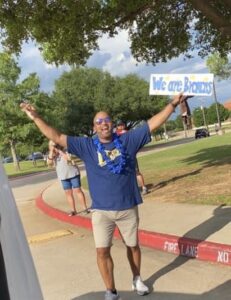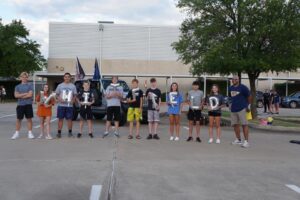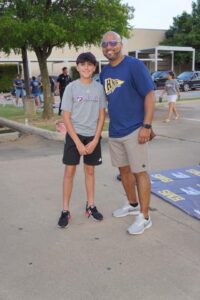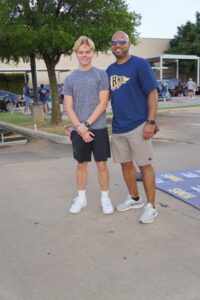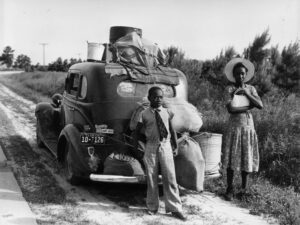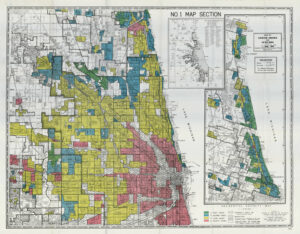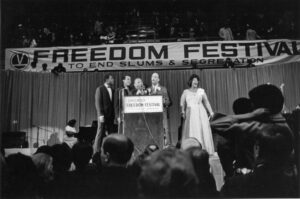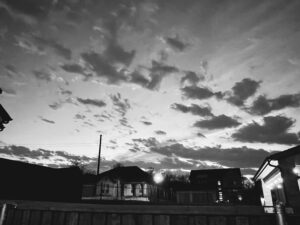A few weeks ago, I had the privilege of meeting with the senior class at my school. I took some time to sit down with each of them and get to know them better. I asked about their dreams, their family lives, and the things they were passionate about. This senior class is smaller than any I’ve ever served, but it allowed me to engage in some profound conversations with these students, serving as a powerful reminder of why I’m so passionate about my work.
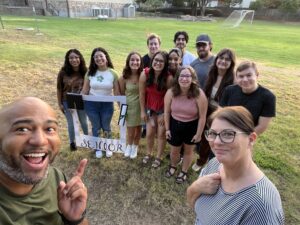
Recommendations
Quite often, I’m asked to write college admissions recommendation letters for former students. Anytime I get a request like this I feel it to be a great honor, and work to oblige. I’ve gotten dozens of these over the years. That someone feels compelled to ask for my words as a recommendation is truly humbling.
But this year’s requests strike a bit of a different chord. These requests are coming from students who were caught up in the transition from middle to high school at the height of the pandemic. These are students who crossed the street with me from Heritage Middle School as 8th graders to Colleyville Heritage High School as Freshmen. This was the year I’d hand them their diploma in May. But due to unforeseen circumstances that none of us ever could have imagined, that is simply not a reality.
Experiences
Reflecting on the past two years, I find myself thinking about the journey that led me to be a panelist at the Education Law Association conference in Reno, Nevada this week. Our piece centered around the legacy of the landmark case, Brown v. Board of Education, and how it relates to the experiences of our students and families today.
This weekend I attended a wedding that brought me to reconnect with students and families I’d served as CHHS when I was an assistant principal in the 2018-2019 school year. It was so great to reconnect with these young people and hear how their journey has played out. Each of them, college graduates well into the next phase of “adulting”. We reminisced on the journey from then to now, then celebrated the union of a beautiful couple.
Transition – From Middle School to High School During a Global Pandemic
Throughout my reflections, I can’t help but think of this year’s senior class at CHHS, especially those who joined me from Heritage Middle School. During the 2019-2020 school year, I was their middle school principal. Now, leading into the 2020-2021 school year, we’d make this journey together. Them, as high school freshmen. Myself, as a first-year high school principal. I’ve often pondered the challenges they faced during that transition, and just how amazing they truly are.
Before the world turned upside down in 2020, we had a blast at HMS. We organized various events, from ice cream socials to Veterans Day ceremonies. Our staff even did a surprise Thriller dance performance for our Halloween pep rally (with ya’ boy as MJ). But then, spring break arrived, and suddenly, we found ourselves in the midst of a global pandemic. It was a time of uncertainty and chaos, and we had to quickly adapt to make education accessible for students stuck at home.
For so many, school had served as a sanctuary, a place of security, and that was taken away overnight. Families and staff members faced hardships daily, from illness to job loss to the loss of family members. We had to reimagine education, distribute laptops, and reassure families that we were there for them. Amid the chaos, we even organized a drive-through eighth-grade sendoff, a small gesture to acknowledge the importance of this transition in their educational journey.
They’s Always Watching
This brings me to the present, as I think about the Class of 2024. They have endured not only the pandemic but also a tumultuous space in time, filled with a lot of vitriol and toxicity. I’ve always believed that our students are watching us, learning from our actions and attitudes. As an educator responsible for their well-being, I strive to be a positive presence in their life, daily. I hope to convey that they are seen, heard, loved, and valued each day.
I am also keenly aware that they are watching our every move – seeing if we’re just saying they’re “seen, heard, loved, and valued” or if we really mean it. And my goal has always been to show them the latter. Flowery words on mission statements are one thing. The way we go about educating the hearts and minds of young people and creating spaces where students can truly be is another. Students know who’s real and who’s not.
To the Class of 2024
So, seeing as though I will not be able to hand them that diploma in May or deliver my heartfelt remarks, here goes:
As you approach the end of your high school journey, I want to take a moment to acknowledge the incredible strength, resilience, and determination you’ve demonstrated throughout these challenging years. Your class has faced the unprecedented trials brought on by the pandemic, and you have emerged stronger and more prepared for the future as a result.
The last few years have been far from easy. You’ve navigated uncertainty, adapted to new ways of learning, and faced many disappointments and missed opportunities. Yet, in the face of these challenges, you’ve shown remarkable courage and resilience. You’ve learned to embrace change, to find opportunities within adversity, and to support one another in times of need.
Despite the hardships, I want you to remember the moments of triumph. Remember the friendships you’ve forged, and the personal growth you’ve achieved. You’ve become a part of history, a generation that didn’t just survive a global crisis but thrived in the face of it. Your resilience and the lessons you’ve learned will be one of your greatest assets as you move forward.
That ability to adapt and preserve through the tough days of life will serve you well in the years to come. Life has a way of throwing unexpected curveballs, and the experiences you’ve had in high school have equipped you with the resilience and problem-solving skills to tackle whatever comes your way.
When these difficult moments come, I encourage you to embrace them, as they can be the foundation of greatness. At the moment, it may seem to be a failure, or it may actually be a failure. That’s ok. Remember, failure is not the end but the beginning of something extraordinary. Those who have achieved greatness have often stumbled along their journey. I hope you always know that, even in chaos, there are lessons to be learned. It’s okay to fall down – just don’t stay there.
You have served as an inspiration for myself and so many others. It was you that were at the forefront of my mind when I testified before Congress. You were with me as I shared my story through various media outlets, shining a light on what all the chaos was truly about – ensuring you have access to a safe, nurturing learning environment that affords you an excellent, robust education that prepares you for the world you will step into.
Quite often, people ask me how on earth I do what I do – working with young people each day. A common refrain is “kids these days” with a tone of hesitancy. I always respond by telling them that I know “kids these days.” They are not a generation disconnected from us. I sit with them, listen to their hearts, celebrate their achievements, and question them when they might be on the wrong path.
Now, as you stand on the threshold of the next chapter in your lives, take with you the knowledge that you are capable of great things. Continue to dream big, set ambitious goals, and pursue your passions with unwavering dedication. The future is full of possibilities. And I have no doubt that you will embrace them with the same courage and determination that have brought you to this point.
Your journey through high school during the pandemic has not defined you. But it has certainly shaped you into a generation that understands the value of unity, adaptability, and perseverance. As you embark on new adventures, whether in college, the workforce, or elsewhere, carry the lessons and strength you’ve gained with you. Your future is bright, and I can’t wait to see the incredible contributions you’ll make to the world.
Remember, you are not alone in this journey. You have a network of support, including friends, family, teachers, and mentors, who believe in your potential. Keep reaching for the stars, stay true to your dreams, and never stop believing in yourselves.
While I may not be physically present as you transition from high school to the next leg of your journey, I will always be one of your biggest cheerleaders. You’ve made a significant impact on my life, and I hope that I’ve made a positive difference in yours.
Congratulations on your achievements, and best of luck in all your future endeavors. Your resilience is an inspiration, and I have no doubt that you will achieve great things.
With love, admiration and unwavering support,
Dr. Whitfield
